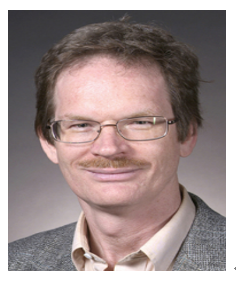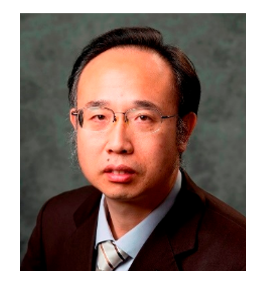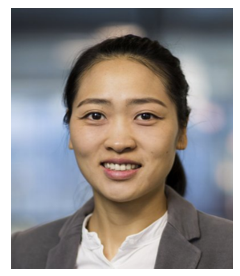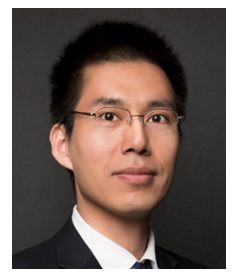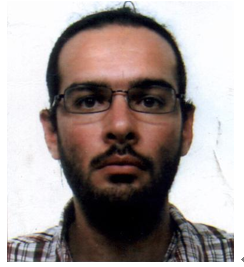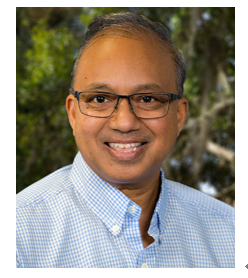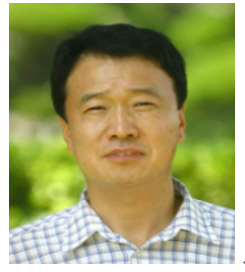多相流在食品、化工、能源等工业、工程领域具有广泛的应用。近年来,得益于超级计算机的发展和算力的提高,多相流的计算流体力学领域发展迅速。与此同时,21世纪对可持续发展提出了更高要求,研究人员面临着将知识转化为对自然环境友好的工程解决方案的迫切挑战。
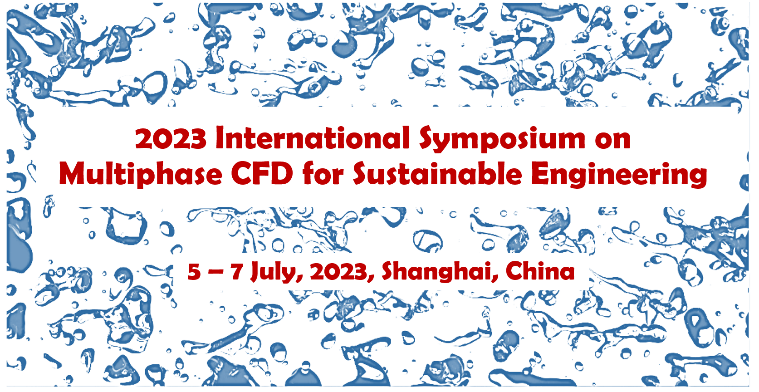
在此背景下,浙江大学上海高等研究院将于2023年7月5-7日举办2023 International Symposium on Multiphase CFD for Sustainable Engineering。本次论坛将邀请国内外多相流数值模拟及计算流体力学领域顶尖研究人员,交流研究前沿和技术发展,探讨计算流体力学技术在绿色工程的应用。
研讨会特邀演讲嘉宾如下:
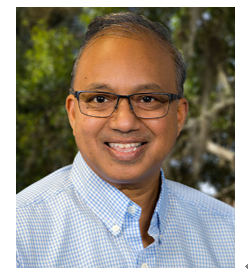
Sivaramakrishnan Balachandar, University of Florida, USA
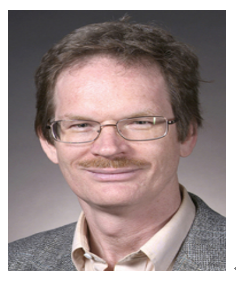
Rodney O. Fox, Iowa State University, USA
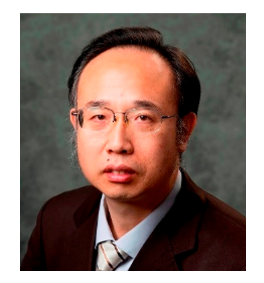
Wei Ge, Institute of Process Engineering, Chinese Academy of Sciences, China
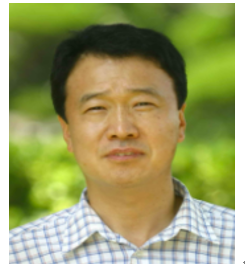
Man Yeong Ha, Pusan National University, Korea

Yurong He, Harbin Institute of Technology, China

Kaihong Luo, University College London,UK

Kun Luo, Zhejiang University, China
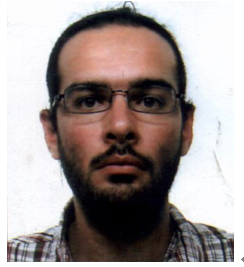
Francesco Picano, University of Padova, Italy

Mikio Sakai, The University of Tokyo, Japan
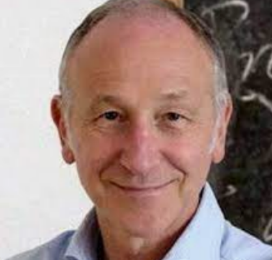
Alfredo Soldati, Technischen Universität Wien, Austria

Yali Tang, Eindhoven University of Technology, the Netherland
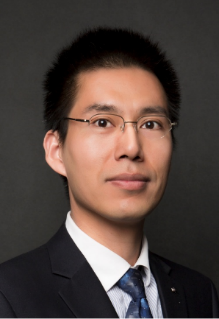
Qiang Zhou, Xi'an Jiaotong University, China
本次研讨会组织者包括:
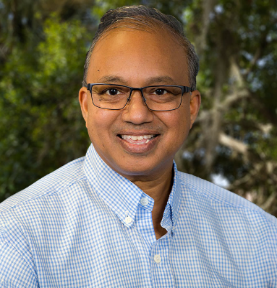
Sivaramakrishnan Balachandar, University of Florida

Kun Luo, Zhejiang University, China

Yali Tang, Eindhoven University of Technology, the Netherlands
会议信息:
时间:2023年7月5-7日
地点:浙江大学上海高等研究院 二楼报告厅
7月6日特邀报告在线直播:

会议议程:
5 Jul | |
17.00 - 18.00 | Lab Tour SIAS |
18.30 - 20.30 | Welcome Dinner |
6 Jul | |
Chair: Kaihong Luo, University College London, UK | |
08.30 - 08.40 | Opening: Ruhong Zhou, Zhejiang University, China |
08.40 - 09.15 | Alfredo Soldati,Vienna University of Technology, AustriaBreakage, coalescence, size distribution and heat transfer from drops in turbulence |
09.15 - 09.50 | Rodney O. Fox, Iowa State University, US Kinetic-Based, multiscale Eulerian models for polydisperse multiphase flows |
09.50 - 10.25 | Wei Ge, Institute of Process Engineering, Chinese Academy of Sciences, China Trans-level multi-scale simulation of multiphase systems: from reactions to reactors |
10.25 - 10.35 | Coffee break |
| Chair: Sivaramakrishnan Balachandar, University of Florida, US |
10.35 - 11.10 | Yali Tang, Eindhoven University of Technology, the Netherland Multiphase flow challenges in regeneration of iron fuel |
11.10 - 11.45 | Qiang Zhou, Xi'an Jiaotong University, China Meso-scale drag model considering surrounding information in gas-solid flows |
11.45 - 12.20 | Francesco Picano, University of Padova, Italy Direct numerical simulation with immersed-boundary methods applied to environmental multiphase flow physics |
12.20 - 13.30 | Lunch |
| Chair: Alfredo Soldati, Vienna University of Technology, Austria |
13.30 - 14.05 | Mikio Sakai, The University of Tokyo, Japan Recent progress on the discrete element method simulations towards realization of digital twins |
14.05 - 14.40 | Sivaramakrishnan Balachandar, University of Florida, US A statistical approach for fast and reliable prediction of room-scale airborne viral contagion |
14.40 - 15.15 | Kaihong Luo, University College London, UK A unified Lattice Boltzmann model framework for multiphase flow simulation and application in sustainable engineering |
15.15 - 15.25 | Coffee break |
| Chair: Rodney O. Fox, Iowa State University, US |
15.25 - 16.00 | Yurong He, Harbin Institute of Technology, China Regulation on characteristics of micro-nano composite structures and applications on photothermal conversion |
16.00 - 16.35 | Man Yeong Ha, Pusan National University, Korea Numerical methodology development based on the multiphase flow model for rapid simulation of frost formation and its application |
16.35 - 17.10 | Kun Luo, Zhejiang University, China Interface-resolved simulation of multiphase reactive flows |
嘉宾信息及报告摘要
| Rodney O. Fox Anson Marston Distinguished Professor in Engineering, Hershel B. Whitney Professor, Global Initiatives, Iowa State University, US Research Interests: Development, implementation and validation of computational fluid dynamics (CFD) tools for Chemical Reaction Engineering |
Kinetic-Based, multiscale Eulerian models for polydisperse multiphase flows
Polydisperse multiphase flows arise in many sustainable engineering applications, and almost always involve a disperse phase with particles of different sizes, compositions, etc., present over a wide range for volume fractions. In this lecture, I will review recent advances in using kinetic-based moment methods to develop well-posed Eulerian two-fluid models. This approach relies on formulating a disperse-phase kinetic equation valid from close-packed to dilute conditions, coupled to a modified Navier-Stokes equation for the continuous phase. Through numerical examples, I will demonstrate that by including added mass and particle-fluid-particle stresses, this modeling approach is well posed for polydisperse flows with arbitrary material density ratios (e.g., bubbly flows and gas-solid flows).
| Wei Ge Professor, Institute of Process Engineering, Chinese Academy of Sciences, China Research Interests: Multi-scale simulation of multi-phase systems, including fluidization, micro-/nano-flow and transport, granular and porous media flows |
Trans-level multi-scale simulation of multiphase systems: from reactions to reactors
Multi-level multi-scale structures are characteristic for many chemical processes, where strong coupling of reaction and transport results in complex apparent reaction kinetics influential to the reactor performance. Traditional continuum-based models can hardly describe such structures and their scale effects faithfully. A trans-level multi-scale discrete computational framework[1] developed at CAS-IPE is introduced in this talk, which addresses this complexity and has been implemented for typical processes of catalytic cracking. The apparent reaction kinetics below particle scale is obtained by hard-sphere/pseudo-particle modeling (HS-PPM), and coupled with computational fluid dynamics/discrete element method (CFD-DEM) for the reactor-level hydrodynamics via a finite difference scheme for particle-level diffusion. The reactant conversion rate and target product selectivity obtained agree well with experimental results, while a continuum approach may give significantly different and unreasonable results. Coarse-grained CFD-DEM[2,3], in both time and space[4-6], can be further incorporated into this framework, which may eventually bridge intrinsic reaction kinetics with commercial reactor performance, providing powerful process development tools for a more sustainable chemical industry.
References:
1.Chengxiang Li, Ji Xu, et al., Trans-level multi-scale simulation of porous catalytic systems: Bridging reaction kinetics and reactor performance. Chemical Engineering Journal, 2023, 455: 140745.
2.Xingchi Liu, Ji Xu, et al., Long-time simulation of catalytic MTO reaction in a fluidized bed reactor with a coarse-grained discrete particle method — EMMS-DPM. Chemical Engineering Journal, 2020, 389: 124135.
3.Xingchi Liu, Aiqi Zhu, et al., Numerical simulation of commercial MTO fluidized bed reactor with a coarse-grained discrete particle method — EMMS–DPM. Powder Technology, 2022, 406: 117576.
4.Shuai Zhang, Wei Ge, Chunjiang Li, Spatial–temporal multiscale discrete–continuum simulation of granular flow. Physics of Fluids, 2023, 35 (5): 053319
5.Yong Zhang, Qi Chang, et al., Coupling DPM with DNS for dynamic interphase force evaluation. Chemical Engineering Science, 2021, 231: 116238.
6.Yong Zhang, Ji Xu, et al., Bi-layer coarse-grained DPM of gas–solid systems with mesoscale heterogeneity resolved. Chemical Engineering Science, 2022, 263: 118058.
| Yali Tang Assistant Professor, Eindhoven University of Technology, the Netherland Research Interests: the fundamentals of multiphase flows using computational fluid dynamics modelling; Hydrodynamics, mass and heat transfer in fluid-particle systems such as in packed and fluidized beds, as well as bubble column reactors |
Multiphase flow challenges in regeneration of iron fuel
Renewable energy resources, such as wind and sun are intermittent. Therefore, the energy transition is about energy storage. Iron fuel is one breakthrough technology to tackle the challenge of large-scale energy storage. The technique involves a circular principle in which iron powder is used as a medium for energy storage. This iron powder can be burned to form iron oxide, better known as rust. In this process, a large amount of thermal energy is released that can be used in industrial processes. The resulting iron oxide is a solid material, so it can be captured after the combustion process. It can then be reused by regenerating it with green energy into flammable iron fuel. In this way, iron powder offers a revolutionary method to store energy in a circular and carbon-free fashion, especially for seasonal storage and intercontinental transport.
In this talk, I will focus on regeneration of iron fuel, i.e., reduction of combusted iron (rust). We have carried out extensive study on two potential approaches: thermochemical reduction using (green) hydrogen and direct electrochemical reduction with (green) electricity. Computational Fluid Dynamics (CFD) plays a crucial role in understanding the underlying multiphase flow dynamics and mechanisms, thus contributing to design and optimization of the regeneration process.
| Qiang Zhou Professor, Xi'an Jiaotong University, China Research Interests: Computational & experimental multiphase flow; Granular flows; Gas-Solid flows; Fluidizations; Origin and effects of meso-scale structures; Lattice Boltzmann Method; Immersed Boundary Method; Particle-resolved direct numerical simulations |
Meso-scale drag model considering surrounding information in gas-solid flows
The filtered drag force is well accepted as the most important constitutive term in practical coarse-grid simulations of gas-solid flows. Currently, four critical issues including considering the effect of macroscale condition, reducing complexity of the model, improving the scale independence and enhancing the adaptability for different flow regimes, have been addressed in recent studies on modeling the filtered drag correlation. To improve the performance of the filtered drag model in these aspects, a novel modeling approach has been developed. In this modeling approach, the modeling database is generated through fully resolved two-fluid model (TFM) simulations coupled with kinetic theory of granular flows in periodic sedimentation systems. To consider the effect of macroscale condition, a new marker, the filtered solid volume fraction at a larger scale whose side length is three times of the filter size, is introduced. The raw data are filtered and binned in terms of the available markers including dimensionless filter size, filtered solid volume fraction, filtered solid volume fraction at the second scale, dimensionless filtered slip velocity and dimensionless filtered gas pressure gradient. A good linear correlation between filtered gas pressure gradient and the bin-averaged filtered drag force has been obtained. And this correlation is independent of the filter size owing to introduction of the filtered solid volume fraction at large scale. Moreover, the effect of the filtered slip velocity on this correlation is only moderate at the dilute region. Based on these features, the ratio between the filtered drag force and filtered gas pressure gradient is treated as the dependent variable and the effect of the filtered slip velocity is neglected to make the modeling process concisely. With these simplifications, the models only correlated to the filtered solid volume fraction at the filter scale and that at the larger scale are developed. Subsequently, the new developed models are evaluated in terms of a priori test and a posteriori test for three typical fluidized regimes including bubbling, turbulent and fast fluidized bed. Compared with the gas pressure gradient-dependent model proposed in our previous study, the new developed models exhibit an obvious improvement. Additionally, the predictions of the new developed models have good agreements with experiments and the fine-grid results for different flow regimes.
| Francesco Picano Professor, University of Padova, Italy Research Interests: Turbulent multiphase flows; Turbulent flow modeling; Numerical techniques for multiphase flows; Fluid-structure interaction; Compressible Aerodynamics |
Direct numerical simulation with immersed-boundary methods applied to environmental multiphase flow physics
Recent computational architectures together with advanced numerical algorithms allow to exploit Direct Numerical Simulation to unravel the physics behind complex multiphase flows typical of environmental problems. In the present talk, we show how the Immersed Boundary Method can be used to handle these kind of flows using DNS focusing on two different cases: turbulent flows with dispersed particles and the erosion/fracture of an elastic material operated by the flow (hydraulic fracturing). Concerning the former case, we show how particles dispersed in a channel flow modulate the turbulence as a function of concentration and inertia. Concerning the other case we will present a novel methodology based on the peridynamic theory to simulate solid structures accounting for the material damage. We will show the application of this method to soil erosion, fiber and porous media break-up. Finally, the perspective of these approaches will be discussed in the context of environmental flow problems.
| Mikio Sakai Professor, The University of Tokyo, Japan Research Interests: Development of new models for DEM simulations; Development of new models for granular and multiphase flows; Physics based CG for granular and multiphase flows;Application of multi-physics simulation to nuclear engineering, e.g., severe accident and nuclear decommissioning; Physical and mathematical modelling of key components and the infrastructure for next-generation vehicles; Optimization of plant design in biomass reactors, incinerators and blast furnaces; Physical and mathematical modelling of food and pharmaceutical engineering |
Recent progress on the discrete element method simulations towards realization of digital twins
Due to the recent remarkable development of information and communication technology as well as computer hardware, digital twin is about to realize. Development of the digital twin is an ongoing challenge in engineering. The digital twin consists of a virtual model that mimics the actual system, including a manufacturing process simulation. Accordingly, modeling and simulation will play an essential role in the digital twin in various industries. The trend is the same as that in the powder industries. To construct the digital twin of the powder processes, the author’s group has extensively developed advanced models, such as the flexible wall boundary model, the coarse-grained discrete element method, the capillary model, and the refined grid model. The adequacy of these models has been proved through lots of validation tests. Besides, the author’s group has also developed a reduced-order model for the discrete element method simulation. These numerical technologies will contribute to developing the digital twin in powder industries.
| Sivaramakrishnan Balachandar William F. Powers Professor, Distinguished Professor, University of Florida, US Research Interests: Computational fluid science (aka CFD), Large scale simulation of complex flows, transition and turbulence, multiphase flows, environmental flows |
A statistical approach for fast and reliable prediction of room-scale airborne viral contagion
The risk of airborne viral contagion in indoor spaces is a multidisciplinary problem involving a wide range of parameters. From a fluid mechanics perspective, the problem of infectivity can be divided into an ejection-scale problem and a room-scale problem. The ejection-scale problem aims to answer the question of what range of droplet sizes remain airborne as a result of expiration activities of a sick person. A theoretical framework was developed to answer this question and validated with high-fidelity simulations. It is shown that the risk of infection is heightened when the droplet evaporation rate is fast, i.e., under hot and dry ambient conditions.
The room-scale problem is then considered to examine the probability of contagion on a longer time scale. Well-mixed models have been used extensively to solve the problem of infectivity at the room-scale. However, it is reasonable to expect that a perfectly well-mixed state cannot be achieved at any realistic level of ventilation. We test the robustness of the well-mixed theory at four levels. Results show that the well-mixed theory is accurate in predicting the viral concentration only when averaged over the entire room. The prediction could be substantially off at separation distances under 2m and over 6 m. A simple correction function is introduced to account for departure from the well-mixed theory. Based on this accurate and rapid predictions can be made that are applicable for a wide range of ventilation conditions (ACH, filtration, etc), wide range of ejection activities (breathing, speaking, singing), for any source-sink separation distance. This framework can also be used to answer questions such as if higher air-change-per-hour (ACH) always better?
| Kaihong Luo Professor, University College London, UK Research Interests: mesoscale and multiscale modelling and simulation across atomic, micro-, meso- and macroscales for energy and engineering system analysis and prediction |
A unified Lattice Boltzmann model framework for multiphase flow simulation and application in sustainable engineering
A promising approach to multiphase flow simulation is the lattice Boltzmann method (LBM), which is based on the general kinetic theory. LBM is considered a mesoscopic method that bridges microscales and macroscales. It has a unified formulation for single and multiphase flows, which is easy to code and run in parallel computers. Moreover, it allows phase interfaces to arise, deform, break or merge naturally without additional/artificial algorithms. Non-ideal fluids and phase change can also be handled with ease. Recently, we have developed a unified lattice Boltzmann model (ULBM) framework, which seamlessly integrates the widely used existing lattice Boltzmann models (SRT, MRT, Cascaded, Entropic, and KBC). Using this framework, we not only put the popular LB models in a general mathematical framework but also clarify the relations among them. More importantly, new and advanced models can be easily incorporated into ULBM to make it a powerful tool for multiphase flow simulation. The capability and usefulness of the ULBM are demonstrated through applications in sustainable engineering, including energy technologies, carbon capture and storage, and advanced manufacturing, etc.
| Yurong He Professor, Harbin Institute of Technology, China Research Interests: Development of dense gas-solid two-phase fluid dynamics model; Development of novel energy storage materials and enhancement of energy storage processes; Advanced functional thermal fluid energy conversion and transport; Solar-thermal/electric conversion of micro and nano structures and applications |
Regulation on characteristics of micro-nano composite structures and applications on photothermal conversion
This work is focused on design and regulation of different micro-nano composite structures and various applications on photothermal conversion based on simulation and experiments. After a background into the solar energy utilization, in this discussion, three areas are highlighted: the photothermal conversion properties of plasmonic gold nanoparticles, the photothermal conversion properties of semiconductor-gold composite nanoparticles, and the photothermal conversion properties of semiconductor regulating micro-nano structures. Finally, prospective photothermal conversion applications are discussed in order to contribute to the sustainable engineering.
| Man Yeong Ha Professor, Pusan National University, Korea Research Interests: Development of thermal management technology for aircraft gas turbines; Next-generation thermal system design technology Development of next generation heat management technology to improve durability and efficiency of highly integrated heating system; Performed the academic project related to heat flow with leading domestic companies; Development of computational analysis technique (FVM, LBM, MD, Hybrid, etc.) |
Numerical methodology development based on the multiphase flow model for rapid simulation of frost formation and its application
A numerical methodology based on the multiphase flow model was developed for predicting frost growth on a cooled surface. The proposed numerical methodology was validated by comparing the results of numerical simulations with measured data obtained from the present experiment. The slow-time acceleration technique was applied to reduce the computational time required for the simulation. The results demonstrated that the developed methodology accurately predicts the distribution of the ice phase volume fraction, the humid air streamline, temperature, and velocity magnitude. Notably, the slow-time acceleration technique significantly reduces the computational time required without sacrificing accuracy. Moreover, the developed numerical methodology with the slow-time acceleration technique successfully predicted frost growth in the freezer of the refrigerator and heat exchanger of the air conditioner.
Kun Luo Professor, Zhejiang University, China Research Interests: Development of thermal management technology for aircraft gas turbines; Next-generation thermal system design technology Development of next generation heat management technology to improve durability and efficiency of highly integrated heating system; Performed the academic project related to heat flow with leading domestic companies; Development of computational analysis technique (FVM, LBM, MD, Hybrid, etc.) |
Interface-resolved simulation of multiphase reactive flows
Multiphase reactive flows are ubiquitous in both natural and industrial settings, such as spray combustion, fossil fuel conversion, and shock wave phenomena. In these scenarios, significant mass, momentum, and energy exchanges occur at the interfaces between gas, liquid, and solid phases. Among the various multi-scale numerical approaches, direct numerical simulation (DNS) represents a powerful tool for interface-resolved simulations of multiphase reactive flows. In this report, we present our recent progress in the development of an immersed boundary method for gas-solid reactive flows, which has been applied to a range of scenarios, from single particle sedimentation to char cloud combustion. Drawing on the DNS database, we have derived new correlations, including drag, Nusselt number, mass transfer, and combustion models. By integrating these correlations with our in-house code, we have demonstrated the superior performance of our model in simulating pulverized coal combustion, as compared to traditional models used worldwide.
图文来源:感谢 Alfredo Soldati教授提供会议宣传图片,Yali Tang博士提供文字


